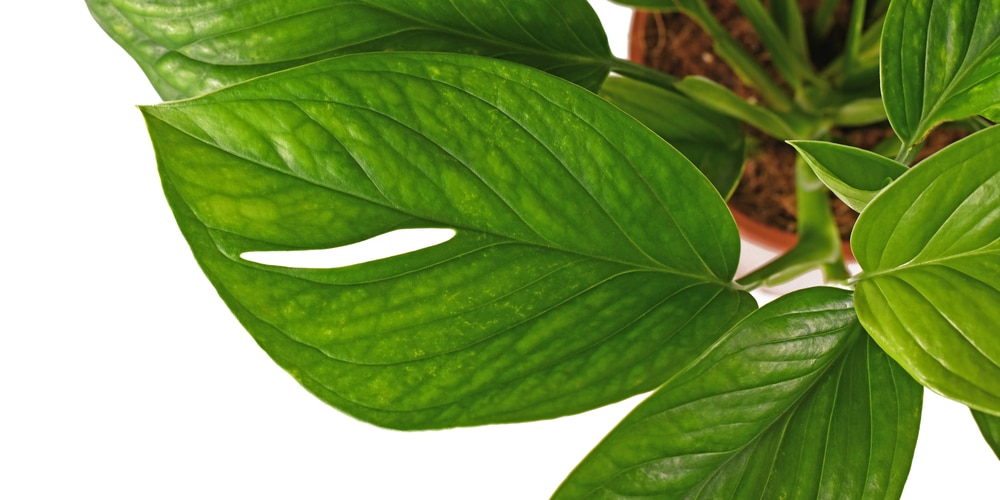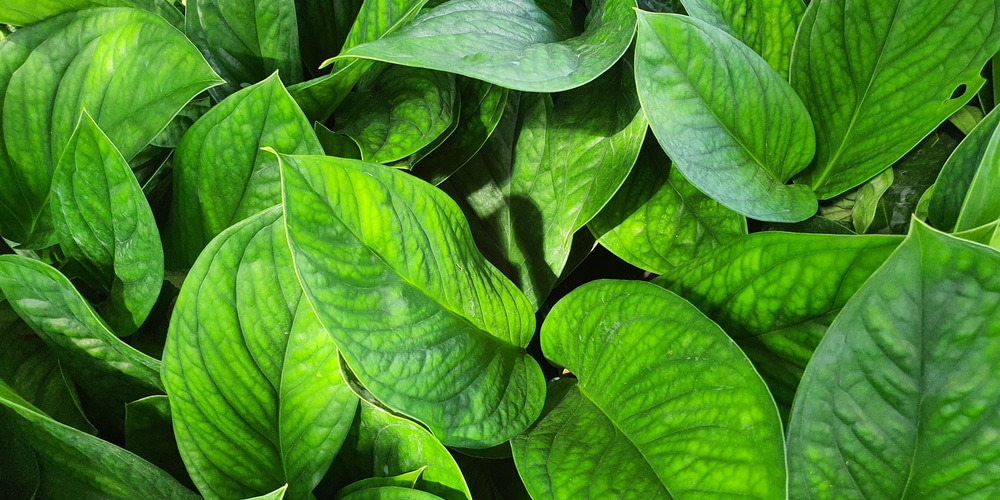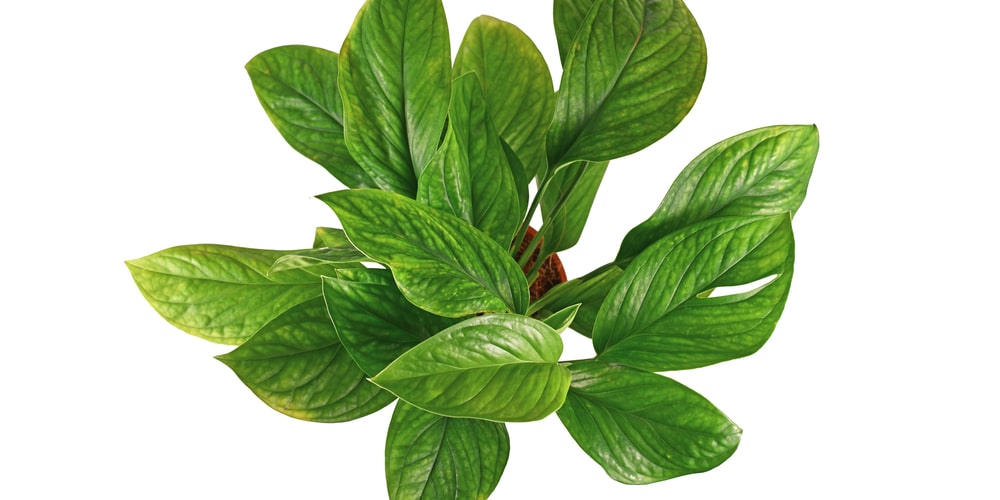If you like the idea of your house looking like a jungle, you will love Monstera Pinnatipartita. It is a flashy and attractive species, perfect for adding some light and color to your interiors. This tropical plant, native to the South American rain forest, will grow lush and dense under optimal conditions.
At maturity, besides the stunning waxy leaves, it produces creamy stalky flowers that make it look even wilder. Keep reading to learn everything you need to know about growing and caring for a thriving Monstera Pinnatipartita!
- Botanical Name: Monstera Pinnatipartita
- Common Name: Philodendron Silver Queen
- Plant Type: Perennial
- Flower Color: Small creamy or pale yellow flowers that grow on the spadix, surrounded by a spathe.
- Size When Mature: 48 to 72 inches.
- Bloom Time: After maturity, all year round.
- Sun Requirements: Indirect Light
- USDA Hardiness Zones: 11-12
- Soil PH Range: 5.0 – 7.5
- Soil Type: Well-draining, slightly acidic to neutral, and rich.
- Water Needs: Medium (likes moisture)
- Native Area: Central America and tropical forests of South America
What you Need to Know About Monstera Pinnatipartita
Monstera Pinnatipartita undergoes a dramatic transformation as it matures. Its leaves will display appealing fenestration as they get bigger, further increasing the aesthetics of the plant. With time and proper care, you can enjoy this plant in all of its splendor.
The good news is that growing this tropical plant in your house is straightforward. Provided that you give it what it needs to thrive (adequate lighting, humidity, enough moisture, and optimal temperatures), you won’t experience any issues.
But you’ll have to be careful if you have kids, cats, dogs, or other small animals at home. These plants can be mildly toxic when ingested, as they contain calcium oxalates, which can cause severe pain, digestive issues, and burning sensations when eaten.
How to Care for Monstera Pinnatipartita
As we mentioned, caring for Monstera Pinnaparita is not challenging. You can grow it indoors, provided that you meet its basic requirements. If you live in a warm region, you can also plant it in your garden (more on this later). To learn how to recreate the optimal conditions for this plant, you are in the right place.
Light
Monstera Pinnapartita is a tropical plant that, in its natural environment, climbs up trees to get the light it needs to thrive. To recreate similar conditions, place your plant under indirect light. Exposure to harsh sun rays will burn the plant’s leaves and turn them brown. Of course, that doesn’t mean you should place it somewhere dark: inadequate lighting will halt its growth and make the leaves look dull and slightly darker.
Do not place it under direct light if you decide to grow your Monstera Pinnapartita outdoors. Instead, choose a location in a bright shade.
Water and Soil Needs
These plants like moisture. However, they will struggle in soggy soil: water your plants when it feels dry. The frequency will depend on factors such as temperature, lighting, humidity, and the size of the plant. Take a look at how your plant reacts and adjust your watering schedule accordingly: if you notice the leaves turning yellow, cut back watering for a couple of weeks.
Use a well-draining potting mix with perlite to increase drainage. Also, don’t forget to use a pot with drainage holes for best results. These plants are not picky about pH: anywhere between 5.0 and 7.5 should give you a thriving plant.
Temperature Requirements
Because of their tropical origins, these plants thrive in warm climates. For this reason, they are perfect for your indoors: the optimal temperature for their growth is between 65-80F, which is more or less what the interior of a house offers.
Don’t forget that these plants need high humidity to thrive. Consider misting their leaves regularly (between two to three times a week) to recreate optimal conditions for their growth in your house. If you live in a dry region, purchase a humidifier and make a pebble tray to increase water retention and keep the environment around your plant moist. You can place your Monstera in the bathroom to ensure it gets all the humidity it needs. However, make sure there is adequate lighting too.
What USDA climate zone can it survive?
You can grow your Monstera Pinnatipartita outdoors only if you live in USDA hardiness zones between 10 and 12. And even there, if temperatures drop below 55F, you should consider moving your plant indoors. Do not expose it to cold winters, as the plant won’t recover from the stress. Also, don’t forget to protect your Monstera from strong winds to avoid problems. If you place it next to a window, consider moving it during the winter to prevent it from suffering from the stress cold temperatures cause to these plants.
Fertilizer
These plants are heavy feeders: you should fertilize them to boost their growth and ensure they develop healthily. Use organic materials to avoid damaging your plant’s root system. You can top the plant’s soil with a balanced 20-10-10 fertilizer to boost leaf production and enhance development.
Common Diseases
Overwatering is the most common cause of problems with this plant. Leaving your Monstera in soggy soil makes it susceptible to fungal infection and weaker. Some pests that might attack this plant include spider mites, mealybugs, and scale. As soon as you notice them, take action. Spray these insects with water and soap to get rid of them and avoid infestations.
Monstera Pinnatipartita Propagation
Propagating Monstera Pinnapartita plants isn’t challenging: do so by stem or tip cuttings for best results. The process is easy and effective. Only take a couple of cuttings about four to six inches long and allow them to develop roots in soil or water. If you prefer planting them in a pot, make sure you use a mix with good drainage. Keep your plants moist but not wet. Your cuttings will be ready to move to a different location in three to four weeks. Rooting takes longer in water: plant your cuttings in soil when the roots are at least six inches long.
How to Prune Monstera Pinnatipartita
The size of a Monstera Pinnapartita is manageable when you grow it indoors. However, you might have to prune your plant to keep it in an attractive shape and allow adequate airflow. Trim off the side if you notice it growing bushier: instead, let the plant grow taller by providing it with support to climb.



